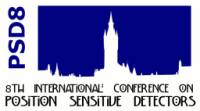Speaker
Dr
Ives Derek
Description
Electron multiplication CCDs have been commercially available for the last few years but have yet to make wide impact in the astronomical community. They have specifically been designed to use an avalanche gain process during the serial charge transfer to give sub-electron read out noise. In all other respects they are identical to the very latest generation of CCDs. They have been used with good success in 'lucky' imaging, for adaptive optics systems and also in high speed faint object spectroscopy science programs. The sub electron read noise makes them an obvious choice for any observation which is normally detector noise limited. We will present a detailed summary of the typical performance and characteristics of these devices and compare and contrast their performance against standard low noise astronomical CCDs. We will also present modelled and real data for these detectors with particular regard to some of their lesser know issues such as clock induced charge. Finally we will present results from real world astronomical testing which shows the superior performance of these devices.
Author
Dr
Ives Derek

